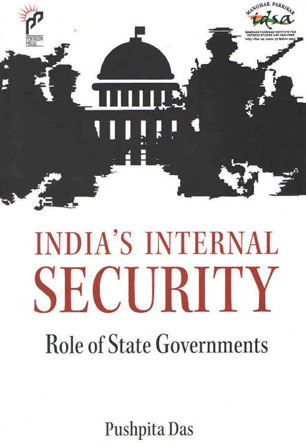Tedim Road—The Strategic Road on a Frontier: A Historical Analysis
The article is an attempt to study the history of the Tedim Road, a 265 km transborder road connecting Imphal (the capital of Manipur in India) with Tedim in the Chin Hills (Chin State) in western Burma (Myanmar). It was constructed by the British solely for the purpose of facilitating military movements along the India–Burma frontier during the Second World War.
UCPN (Maoist)’s Two-Line Struggle: A Critical Analysis
The objective of this article is to critically analyse the discourse within the Unified Communist Party of Nepal (Maoist) or known as UCPN (Maoist) since its evolution and find out whether the Maoists have adapted themselves to the democratic process well by using democracy as a tool to achieve their own revolutionary political objectives. The article argues that the internal Maoist discourse reflects that there is no change in the UCPN (Maoist) strategy or political goals. They have only changed their tactics to suit the situation.
Strategy and Tactics of the Indian Maoists: An Analysis
Naxals of the Communist Party of India (CPI) (Maoist), better known as Maoists, characterised more than once by the Indian prime minister as the gravest threat to our internal security, have been continuously fine-tuning their strategies and tactics in order to maintain their relevance. On the other hand, the state too has been making concerted efforts by taking ‘security and development’ measures to diminish, if not altogether defeat, the challenge posed by the rebels to the Indian state.
Re-examining India’s Counterterrorism Approach: Adopting a Long View
This article looks at the status quo of Indian counterterrorism policy—which largely favours ‘physical’ or ‘hard’ measures—and proposes that the government adopt a more holistic strategy. Termed ‘Countering Violent Extremism’, this would involve measures geared towards long-term prevention, with greater attention paid to the reasons for which people commit terrorism and to the impact of counterterrorism on communities.
Maoist and Other Armed Conflicts by Anuradha Mitra Chenoy and Kamal Mitra Chenoy
In one of the most well-written and extensively researched books on the subject, Anuradha Chenoy and Kamal Mitra Chenoy attempt to holistically examine the state of armed conflicts in India. In their own words, the book has the modest aim of understanding the roots, the nature and the impact of the armed conflicts in India. However, the title gives the reader the erroneous impression that the Maoist conflict will be the central theme while other conflicts will be peripheral.
Emergent Micro-National Communities: The Logic of Kuki-Chin Armed Struggle in Manipur
The granting of scheduled tribe status to the Kuki-Chin people eroded their allegiance to clan and linguistic/dialectal identities. While they do not have any problem with a pan-ethnic identity, their primary loyalty is to their own clans and communities. Invocation of kinship ties by different groups does not necessarily translate into a common political agenda. There are at least 15 armed groups among them that have combined into two larger groups—the United People's Front (UPF) and the Kuki National Organisation (KNO)—and signed a peace agreement with the state and central governments.
Political Integration of Northeast India: A Historical Analysis
Most nation-states in Asia and Africa that gained independence from colonial rulers during the middle of the 20th century are diverse in their ethnic composition. The national governments make efforts to politically integrate their constituent units in the face of the continuing resistance of several ethnic groups. India adopted various means to integrate the more than 600 princely states and other loosely administered areas.
Managing India’s Land Borders: Lessons from the US Experience
India has been grappling with the problem of devising an efficient border management strategy that would prevent the entry of dangerous elements while at the same time allowing the legitimate flow of goods, services and people. Given that it has always been vulnerable to cross-border threats and challenges such as illegal migration, drug and human trafficking, gunrunning, smuggling of commodities and cross-border terrorism, India has taken a largely unilateral approach towards border management whereby security of the borders is accorded primacy over the free movement of people and goods.
Securing the Andaman and Nicobar Islands
The Andaman and Nicobar islands are of immense strategic significance for India. The geographical configuration and the location of the island chain in the Bay of Bengal safeguards India's eastern seaboard as well the approaches to the Indian Ocean from the east. Its proximity to the Southeast Asian region enables India to forge friendly relations with its Association of South East Asian Nations (ASEAN) neighbours. The physical isolation and remoteness of the archipelago, however, make it vulnerable to conventional and non-conventional threats.









